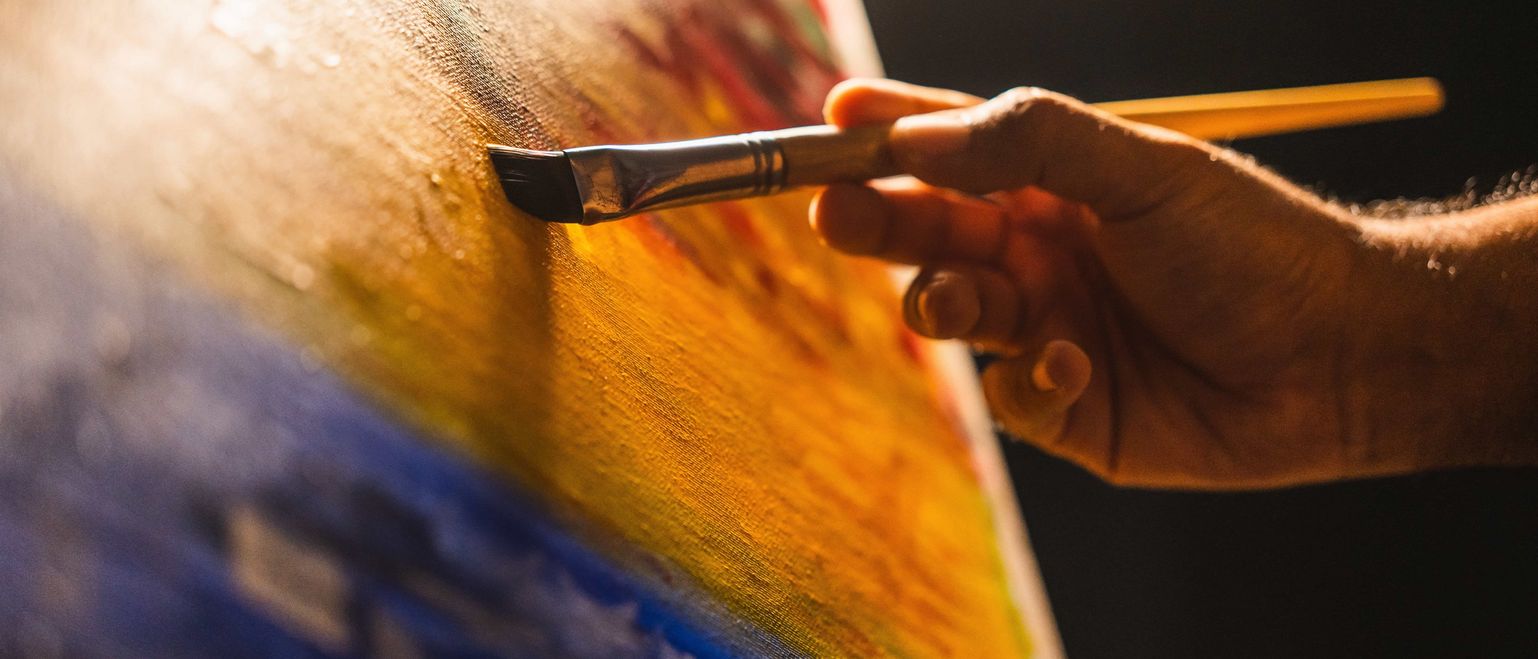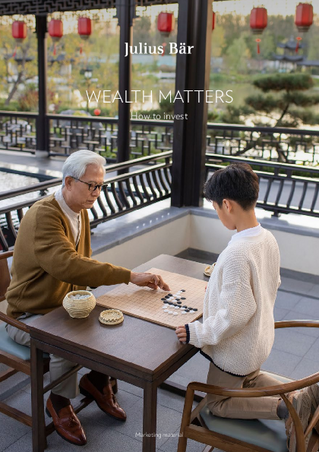Brushstrokes of wealth: How to invest in art
For ultra-high-net-worth investors, art is more than a luxury – it’s an alternative asset that diversifies portfolios, preserves value, and shapes cultural heritage. Like a painting created layer by layer, each acquisition adds depth to a picture of passion, prestige, and purpose. In this How to Invest, we explore why art deserves a place on the investor’s canvas, how it generates returns, and what risks need to be managed.
Key take-aways
- Art provides diversification, resilience, and inflation protection. It moves independently of markets while preserving cultural and financial value.
- Art’s value grows through rarity, recognition, and ownership history. It rewards investors who buy carefully and hold long term.
- Risks include liquidity, volatility, authenticity, and costs. These are best managed through due diligence, expert advice, and cultural focus.
Art - an asset class that behaves to its own dynamics
Traditional investments such as stocks, bonds, and property provide the solid background of most portfolios. But art adds something different: it’s an asset class that behaves according to its own dynamics. Unlike markets tied to corporate results or central banks, art moves at its own pace. For investors, this means two things: potential for strong appreciation and, crucially, diversification.
Art has shown itself to be a reliable store of value over decades. Jean-Michel Basquiat’s Untitled skull painting, purchased for USD 19’000 in 1984, sold for USD 110.5 million in 2017. Not every piece delivers such returns, but fine art has often appreciated steadily. During periods of inflation, art has also acted as a hedge, rising much like prime property.
For ultra-high-net-worth (UHNW) investors, this makes art a useful counterbalance. While financial markets can be volatile, art typically moves independently, adding resilience to a portfolio. In uncertain times, it has often attracted capital precisely because of this detachment from traditional cycles.
How art creates financial value
For investors, understanding how art gains value is critical. Unlike equities, its worth is not tied to earnings or dividends. Instead, it emerges from three main factors: scarcity, cultural significance, and provenance.
Original works are by nature unique. Scarcity drives demand, especially for artists whose careers are complete and whose supply is fixed. Cultural significance also matters. When museums acquire works or critics elevate an artist, values can rise quickly. The recent reappraisal of Leonora Carrington’s surrealist paintings, which now sell for tens of millions, demonstrates how recognition can unlock value.
Provenance, the documented history of ownership, adds another layer. Works once held in museum collections or owned by well-known figures often achieve premiums far above their peers. Investor behaviour plays a role too. Because many collectors hold on to works they love, supply remains tight, supporting prices across the market.
For investors, returns are shaped less by cashflows than by cultural demand and scarcity – factors that support appreciation and sometimes drive exceptional results.
Approaches to building an art collection
Investors can approach the art market in different ways, depending on their appetite for involvement and risk. A patient ‘buy and hold’ strategy, focusing on established artists who are globally recognized and whose works reliably increase in value, command high prices at auction, and are featured in major museum collections, is the closest to a defensive allocation. Such works may not rise quickly, but they usually appreciate steadily over decades.
Others prefer a more active stance, trading works to take advantage of market shifts. Identifying emerging talent early can deliver outsized gains, but the risks are higher. Like venture capital, the promise of returns sits alongside the risk of underperformance if an artist falls out of favour.
Art funds provide another route, offering diversification and professional management. They allow investors to gain exposure to high-value works while leaving decisions to specialists. The cost is reduced control and higher fees, but for those wanting financial exposure without personal curation, funds can be attractive.
Innovation: Expanding the palette of opportunities
Digital innovation has entered the frame increasingly in recent years. The NFT boom, epitomised by Beeple’s Everydays, a collage of 5000 digital images, which sold for USD 69 million in 2021, introduced a new category of investable art. Meanwhile, media-artist Refik Anadol, whose AI-driven, multi-sensory work Glacier Dreams was commissioned by Julius Baer, demonstrates how machine-generated art can elevate cultural value while attracting institutional patronage.
Fractional ownership and tokenised artworks continue to evolve, providing innovative ways for investors to participate in the market. Nevertheless, traditional channels remain central. Auction houses such as Christie’s and Sotheby’s, along with leading galleries, provide access, authenticity, and often liquidity when it is needed. Online platforms have added transparency and reach, but established institutions retain a strong role in guiding UHNW investors.
Risks in the art market and how to manage them
Every investment carries risk, and art is no exception. Liquidity is a primary challenge. Unlike equities or bonds, art cannot be sold instantly. Finding the right buyer can take time, and auction fees are significant. Market volatility is another concern. Artists can move in and out of fashion quickly, leading to sharp swings in value. Damien Hirst’s market, for example, experienced a strong surge in the early 2000s, followed by periods of moderation and renewed interest.
Authenticity is a perennial risk. Forgeries remain common, even at high levels of the market. Careful verification of provenance is essential. Ownership also brings costs: insurance, storage, and conservation all eat into returns if not planned for. Finally, art is subjective. Tastes change, and what is highly prized in one decade may lose relevance in the next.
To navigate the pitfalls of buying, holding, and selling art, investors should:
- take a long-term perspective, favouring works with cultural and historical weight
- invest with purpose, selecting pieces they would be content to hold even during market downturns
- verify provenance and authenticity with independent experts
- work alongside trusted advisors, from legal specialists to art market professionals.
These steps act as safeguards, much like the protective varnish on a canvas, invisible but essential in preserving its value.
A lasting canvas of legacy and influence
Financial returns are not the only reason collectors turn to art. Unlike shares or bonds, art can be enjoyed, displayed, and passed down. This tangible quality makes it both a store of wealth and a vehicle for legacy. Families often see collections as part of their heritage – assets that enrich life while leaving a lasting impression for the next generation.
This commitment to legacy is not limited to private collectors. Institutions, too, act as custodians of cultural heritage. Julius Baer, for example, has built its own art collection over decades, reflecting both long-term vision and the belief that art enriches communities as well as balance sheets.
Art can also bring influence. Prominent collectors sometimes shape markets simply through their choices. Kenneth C. Griffin’s donation of Pollock and de Kooning works to the Art Institute of Chicago was both philanthropic and market-moving. For investors, such influence is not just about cultural contribution: it can reinforce the value of their holdings by placing them within the broader narrative of art history.
Why art belongs in the investment picture
For UHNW investors, art and collectibles are not simply assets of beauty, they’re instruments of diversification, inflation protection, and long-term value creation. They also carry the power to shape legacy and identity. Each acquisition adds another brushstroke to an investor’s financial and cultural canvas, contributing to a picture that endures beyond market cycles.
With the right approach, art can complement traditional holdings, offering both stability and the possibility of exceptional returns. With patience and guidance, investors can build collections that preserve wealth, inspire joy, and create a legacy as enduring as the works themselves.
The strongest portfolios, like the finest paintings, are not only balanced: they’re masterpieces in their own right.




No comments:
Post a Comment